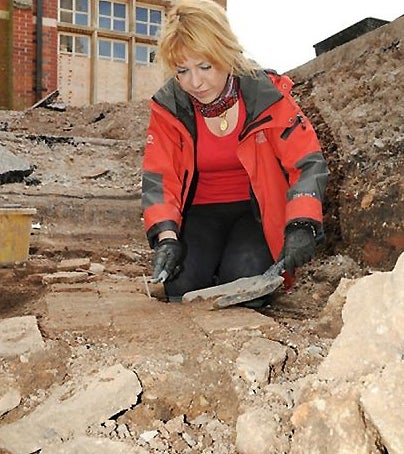Archaeologists think skeleton may be that of missing King Richard III

Your support helps us to tell the story
From reproductive rights to climate change to Big Tech, The Independent is on the ground when the story is developing. Whether it's investigating the financials of Elon Musk's pro-Trump PAC or producing our latest documentary, 'The A Word', which shines a light on the American women fighting for reproductive rights, we know how important it is to parse out the facts from the messaging.
At such a critical moment in US history, we need reporters on the ground. Your donation allows us to keep sending journalists to speak to both sides of the story.
The Independent is trusted by Americans across the entire political spectrum. And unlike many other quality news outlets, we choose not to lock Americans out of our reporting and analysis with paywalls. We believe quality journalism should be available to everyone, paid for by those who can afford it.
Your support makes all the difference.The search for the last resting place of Richard III took a dramatic twist yesterday as human remains found beneath a car park in Leicester were said to have wounds consistent with the king's death at the Battle of Bosworth FIeld in 1485.
Archaeologists from Leicester University found two skeletons at the Grey Friars site last week, one of which could be the king.
They discovered that an arrowhead was stuck between the vertebrae and the skull seemed to have suffered a blow "consistent with an injury received in battle; a bladed implement appears to have cleaved part of the rear of the skull".
The team cited several reasons for thinking the remains belonged to Richard III, primarily because historical sources point to the choir of the lost Church of the Grey Friars as his burial place.
The team believes it found the church beneath the car park, and the bones were indeed located under the choir.
Richard Taylor, the university's director of corporate affairs, said: "This skeleton certainly has characteristics that warrant further detailed examination."
Richard III, who ruled England for two years from 1483, was the last king of the House of York and the last of the Plantagenet dynasty. His army's defeat by Lancastrian forces at Bosworth Field was the decisive battle of the Wars of the Roses, and he is believed to have been buried in Leicester. One of the skeletons found during the dig has spinal abnormalities, with a form of curvature which "would have made his right shoulder appear visibly higher than the left".
The team said this was consistent with contemporary accounts of Richard's appearance, adding: "The skeleton was not a hunchback and did not have a withered arm."
The university will now test the bones for DNA against descendants of Richard's family – a process which is expected to take about 12 weeks to complete.
Professor Lin Foxhall, the head of the university's School of Archaeology, said: "Archaeology almost never finds named individuals – this is absolutely extraordinary. Although we are far from certain yet, it is already astonishing."
The identification process is likely to involve swabs of DNA material taken from Michael Ibsen, a London furniture-maker whose late mother was identified as a 16th-generation descendant of KIng Richard III.
Join our commenting forum
Join thought-provoking conversations, follow other Independent readers and see their replies
Comments